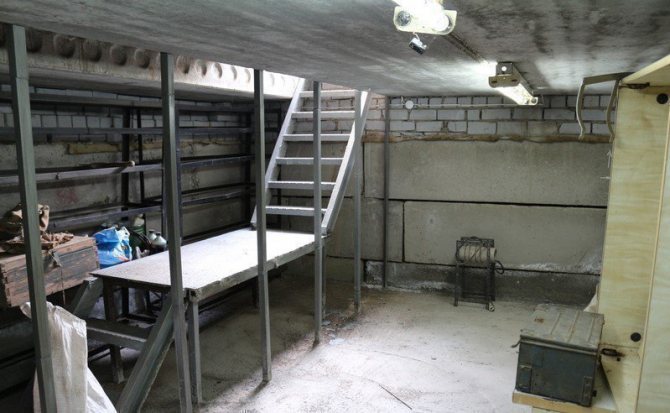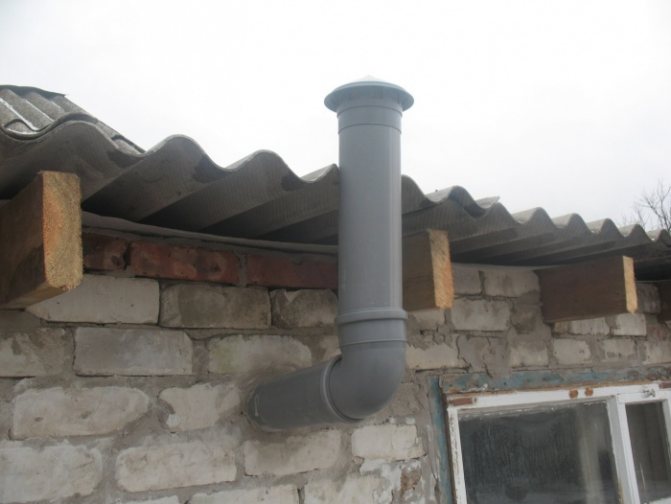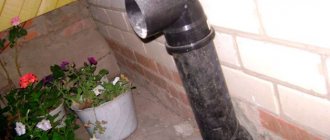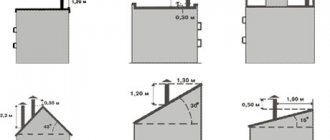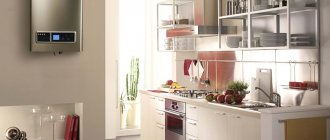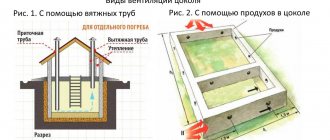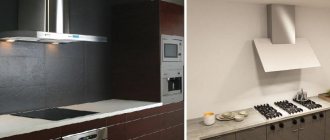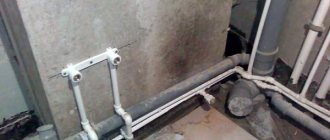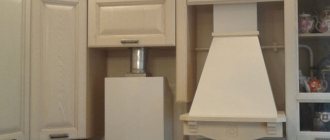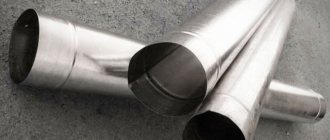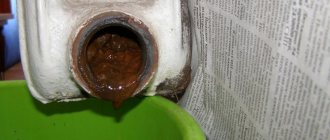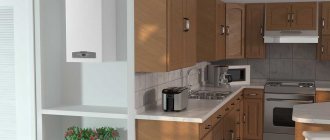The arrangement of high-quality ventilation in the cellar in the garage contributes to the formation of a healthy microclimate in the room. Correct air exchange allows you to store vegetables, fruits or canned food almost all year round. The constant change of air prevents the formation of dampness and, as a result, fungi and mold. Otherwise, the products will deteriorate rather quickly, and the resulting moisture can not only destroy the cellar over time, but also harm the car in the garage.
The cellar requires the arrangement of high-quality ventilation
Selecting the type of ventilation
For a normal healthy microclimate, a sufficient amount of air must enter the cellar. Its inflow can be ensured in two ways:
- arrangement of natural ventilation;
- the creation of a forced draft mechanism.
Natural ventilation works on the principle of thermal convection. The drier air coming from the street sinks to the very bottom of the basement, and then, having warmed up, rises up, freeing up space for a new portion of fresh air.
Forced ventilation on the principle of arrangement is very similar to natural, but only when it is assembled, additional electrical mechanisms are used to facilitate faster air movement. The blowers used ensure a more efficient ventilation system.
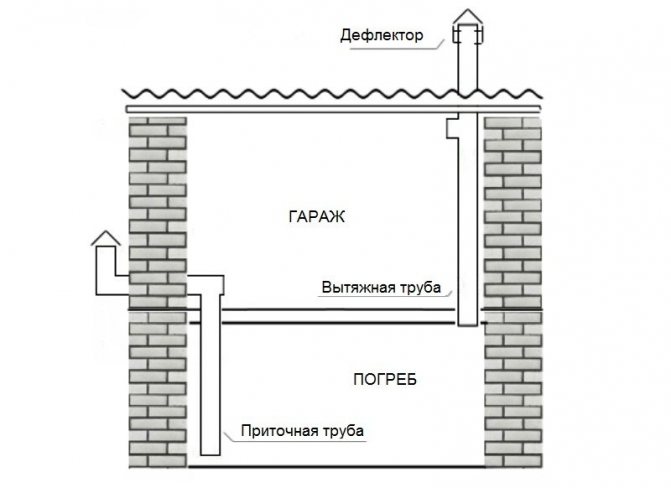
Supply and exhaust ventilation scheme in the cellar
Device and circuit
Diagram of a natural supply and exhaust system:
- Straight chimney.
- A pipe for insulation of a larger diameter than an exhaust pipe.
- Insulation material.
- Condensate drainage tank and tap.
- Supply pipe with bends.
- Rodent and insect net.
- Special valves for pipes.
Ventilation device in the garage cellar:
- The exhaust air duct is installed vertically through the ceiling and leads out to the garage roof. It is best to equip it in one of the corners of the room. The pipe should exit in such a way that its upper end rises above the roof ridge by at least 50 cm.
- The lower edge of the chimney is located just below the ceiling, above the level of the supply duct.
- The exhaust air duct is equipped with a valve that is used to drain the condensate.
- To reduce the level of condensation and frost formation in winter, the exhaust air duct is insulated.
- The supply pipe is installed in the opposite corner from the hood. In the basement, it should end at a distance of 50-80 cm from the floor.
- The upper end is led out through the ceiling and goes into the side wall of the garage. It rises 50-80 cm above the ground. To protect it from rodents and insects, the inlet of the "inflow" is equipped with a special protective mesh. You can buy it or pick it up from the options available. The main thing is that the cross section is small, and the material is strong and stable.
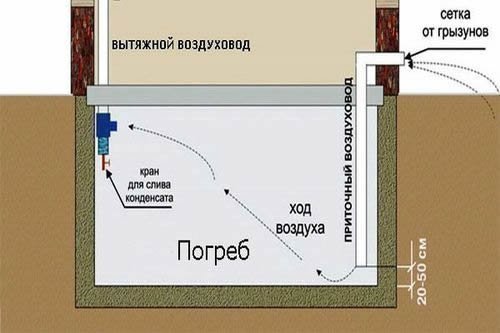

Exhaust air duct diagram
For insulation of the exhaust system, a system is perfect in which the pipe is placed in another pipe of a larger diameter, and the space between them is filled with insulation (mineral wool or other similar material). The thickness of the insulation should not be less than 50 mm.
With the help of such a supply and exhaust system, the air in the room is constantly renewed. The movement of the masses is carried out independently due to the difference in the specific gravity of cold and warm gases. The difference in the height of the pipe inlets allows air masses to move freely.
In the natural system, a large difference in temperature, characteristic of winter, should not be allowed.Otherwise, drafts with a high speed of movement of air masses will occur. This will lead to the freezing of the room and everything that is there. To solve this problem, it is recommended to equip the pipes with special valves, with the help of which, if necessary, block the supply or removal of air masses.
With a forced ventilation system, the circuit is supplemented with fans that are mounted on the exhaust and supply lines. Here, a competent calculation of the electrical networks of the garage and the adjoining cellar plays an important role.
Requirements for electrical networks in the basement:
- the capabilities of cables and equipment must meet the planned loads;
- switches, sockets must be protected against moisture and condensation.
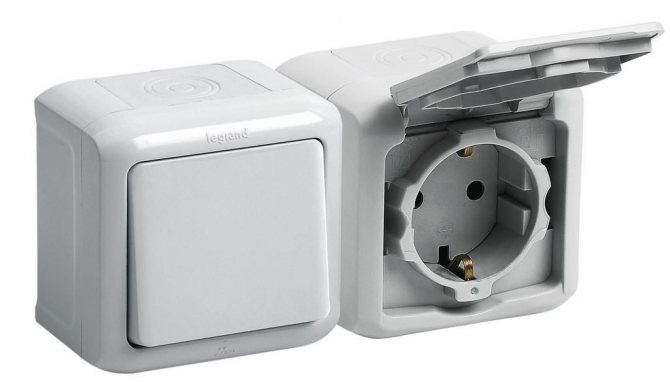

One of the main requirements for electrical networks in the basement is the use of outlets with moisture protection
When is it better to install a forced system?
- Large basement area.
- Storage of large quantities of food, vegetables and root vegetables.
- The importance of maintaining a certain level of microclimate.
- High humidity level.
The choice of pipes for arranging ventilation
As the basis for the entire ventilation system in the cellar in the garage, pipes made of almost any material can be used:
- metal;
- asbestos;
- plastic;
- from aluminum and others.
Other pipe options are also suitable, for example, made of cast iron, but their use is often impractical due to the higher cost. Usually, air ducts with a diameter of 110 to 200 mm are used.
Both air ducts providing ventilation in the cellar in the garage must be equipped with dampers. Their task is to partially or completely block the movement of air. This may be required in frosty conditions.
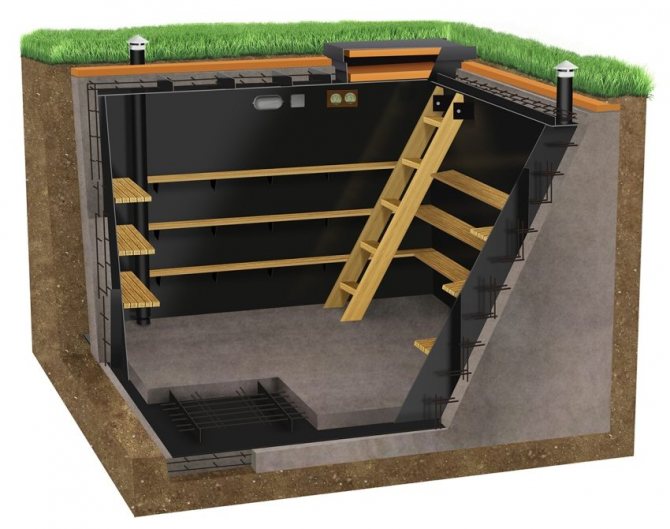

Arrangement of a cellar with ventilation, reinforced base walls and floors and an insulated ceiling
Rules for maintaining an optimal microclimate in the cellar in winter
The most acceptable microclimate in the cellar is one in which the laid products will retain their taste and appearance for as long as possible.
The optimum temperature in the cellar, at which vegetables and fruits can be stored even until spring, is from two to four degrees Celsius. In this case, deviations are allowed, but not more than one degree.
Freezing of the cellar during the winter season can lead to spoilage of food. Cellars that were dug in clay soil are especially susceptible to hypothermia and freezing.
This is due to the high thermal conductivity of clay - although it heats up quickly, it gives off heat to the environment just as easily.
Ideally, it is best to take care of this issue even during construction and, if possible, equip the cellar in sandy or sandy loam soil, which will store heat much better.
If it is impossible to choose the location and type of soil (and this happens in the overwhelming majority of cases), then all the necessary measures must be taken to insulate the cellar.
The high thermal conductivity of soils can be reduced by using expanded polystyrene, the sheets of which must be attached to the walls of the room by means of polyurethane foam or special glue.
Particular attention should be paid to areas that are located at the level of soil freezing. If the basement is located very deep, then it is enough to insulate only the upper part of its walls.
Of course, it is impossible to predict exactly what the temperature will be in the basement during the winter. Therefore, it is advisable to monitor the air temperature in the cellar, especially if there is a doubt about the reliability of the insulation.
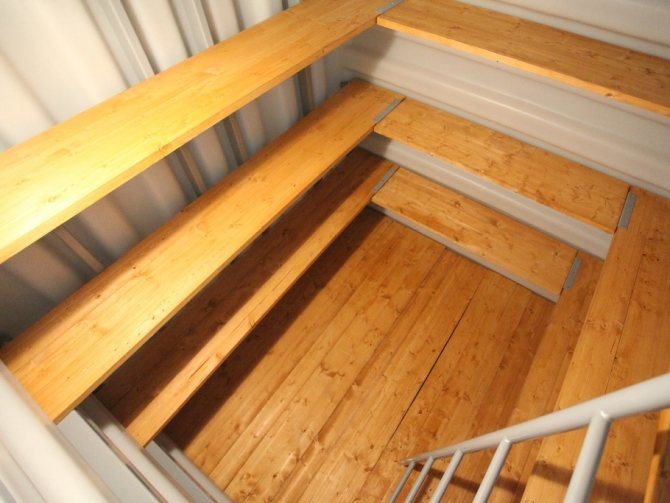

If, after frost, the temperature still drops to zero or even lower, additional measures must be taken.
If a large amount of snow has fallen, you can fill the basement hatch with it.This method is suitable if the hatch is outside.
Snow has good thermal insulation - it's all about the air, which lingers between the snowflakes and does not conduct heat well.
And the fluffier the snow is, the better it will cope with this task. Of course, while everything is covered with a thick layer of snow, and until the temperature in the cellar returns to normal, it will no longer be possible to use the room and get supplies out of it.
We'll have to wait a while, perhaps a few days.
Also, in extreme cases, you can warm up the storage using heating appliances. For this, it is advisable to conduct electricity to the basement.
It should be borne in mind that for effective and safe heating in the room, the ventilation system must necessarily work well, since with a sharp heating, the humidity in the room will drop sharply.
A forced ventilation system is best suited for this.
And for effective heating, thermosyphons and special split systems are the best options. But it should be borne in mind that their cost can be extremely high. And they will pay for themselves only in large cellars.
Arrangement of natural ventilation in the cellar in the garage
This system consists of only two pipes. One of them is responsible for the supply of fresh, dry air, and the second for the removal of waste, by bringing it out. The most advantageous places for laying pipes are the opposite corners of the cellar. With this arrangement, the likelihood of the formation of places in which the air will stagnate is significantly reduced.
The supply pipe should be lowered to approximately 0.4-0.5 m from the floor, while the exhaust pipe should be down to 1.5-2 m. The exhaust duct should be longer than 2.5 m in order to ensure a sufficient temperature difference to facilitate movement air. A special deflector is installed on its upper part, towering over the roof. It will perfectly protect the basement from dust and precipitation, and will also take care of a more efficient extraction.
The supply part of the duct is positioned in such a way that its upper part is about half a meter from the ground. A fine-mesh lattice is additionally installed on it, which will protect against the penetration of any living creatures into the cellar: rats, mice, cats.
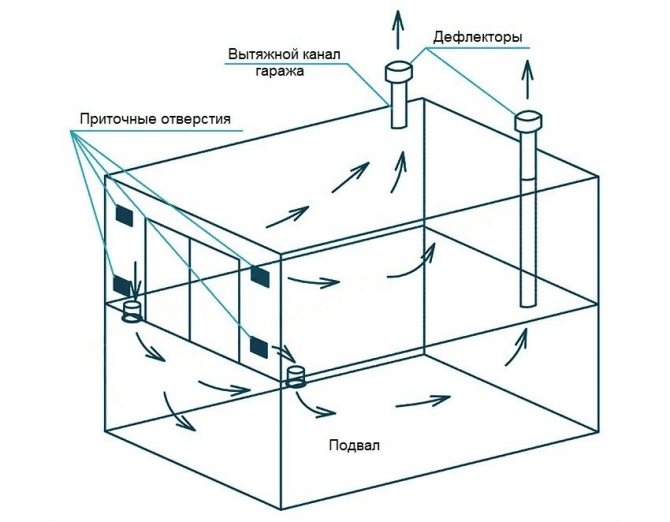

The scheme of natural ventilation in the garage, under which the basement is located
The best ventilation system in winter
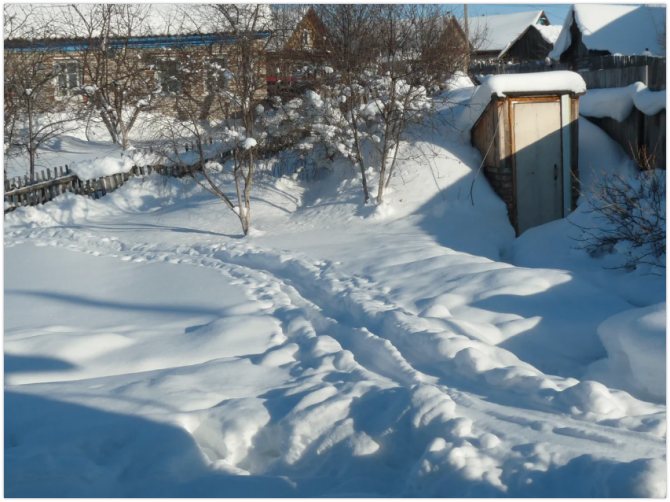

The best ventilation option, especially when it comes to large cellars, would be ventilation with two pipes.
This system works on the basis of simple physical laws - the greater the temperature difference, the faster the air flows, and when heated, the warm air moves upward.
When such ventilation is in operation, the vents must be closed. Otherwise, additional air volumes will pass through them, which will affect air exchange.
Air masses will flow through the exhaust ducts at a lower speed, and over time, air stagnation in the room will occur.
For the arrangement of ventilation with two pipes, there are the following recommendations:
- air ducts can be either round or square;
- it is necessary to install the supply and exhaust pipes at opposite ends of the room.
- the diameter of the outlet holes is calculated by the formula: area (room) × 26/13;
- the air ducts should be taken out to the roof of the structure. Only the supply pipe can be placed on the wall;
- fresh air masses should flow through the supply pipe to the lower part of the room. But the pipe should not be located close to the floor. The exhaust pipe is installed as close to the ceiling as possible;
- for the winter, dampers must be installed in the ventilation system and well insulated.
Forced ventilation
The design of forced ventilation in the cellar in the garage is practically the same as with natural air exchange, only it is additionally equipped with fans powered by the network. That is why it is necessary to follow the basic rules of electrical safety, because the condensate accumulated in the pipes can cause a short circuit. You need to purchase equipment that can work in wet conditions and be sure to perform high-quality waterproofing.
The fans can only be installed in one pipe. This is usually done in an exhaust duct. If you put the blower in the supply pipe, the ventilation efficiency in the cellar in the garage will be much higher. Another advantage of mechanical ventilation is the independence of the system from weather conditions. In any case, the room will quickly dry out and it will not be difficult to maintain the necessary humidity in it.
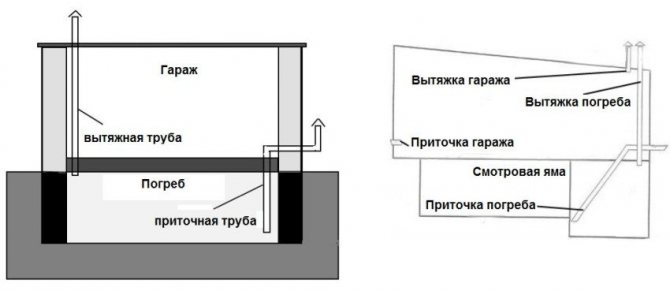

Cellar ventilation options with one or two exhaust pipes
Supply ventilation can be organized not only with a fan. Can be used:
- Diffuser-vane. It is installed on the upper end of the supply air duct. This design works due to wind energy.
- Low power light bulb - minion. It improves the quality of air exchange by heating the streams.
It is also possible to create an automatic system that will work independently, with little or no external control. Such ventilation structures are equipped with special sensors that will independently turn on the supply and exhaust mechanisms when the air parameters change: humidity, temperature. Such systems also turn off on their own when all indicators are normalized.
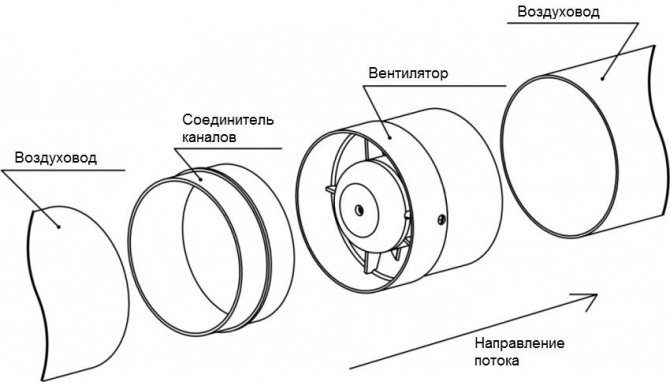

Duct fan assembly diagram
Types of cellar ventilation in winter
Airing any room, including the cellar, can be natural and forced. The first option is considered preferable for owners of small storage facilities, since its arrangement does not require serious financial investments or complex installation. However, no one interferes with the installation of forced ventilation, which involves the use of special fans that remove exhaust oxygen and provide fresh air. Residents of regions with cool climates are advised to use combined systems that allow the storage to be ventilated naturally at moderately low temperatures, and in severe frosts - to correct the flow of fresh air (Figure 3).
Note: It is not recommended to leave the ventilation system unattended in severe frost. The fact is that with the intense flow of frosty air into the cellar, the room can freeze and the crop deteriorate, so it is better to foresee this feature in advance.
To make it easier for you to decide on the optimal type of ventilation for a home cellar, we will consider each of them in more detail:
- Natural: or supply and exhaust ventilation is considered the simplest option for ventilating an underground storage. For its arrangement, pipes of the optimal diameter are installed in different corners of the cellar and brought out. Due to the temperature difference between the outside and inside the room, a constant and stable removal and flow of oxygen is ensured.
- Forced: such a system is also called mechanical, since it involves the removal of exhaust air using fans. Typically, this type is used in large industrial warehouses or residential buildings to get rid of dampness or bad odor in the room. The deflectors, which are installed on the chimney, have a similar operating principle. Due to the force of the wind, the deflector creates additional traction inside the pipe and makes ventilation more intense.
- Combined: such a ventilation system is installed if natural ventilation is not enough to ensure optimal air exchange in the storage. Its operation does not depend on the ambient temperature or other factors, and can operate smoothly all year round. The name of such a ventilation system fully explains the principle of its operation. A supply and exhaust pipe is installed in the room, but a fan is mounted in the exhaust channel. It helps to quickly remove waste oxygen from the basement, and fresh air immediately begins to flow through the inlet. If the storage is large, a similar fan is installed in the supply pipe.
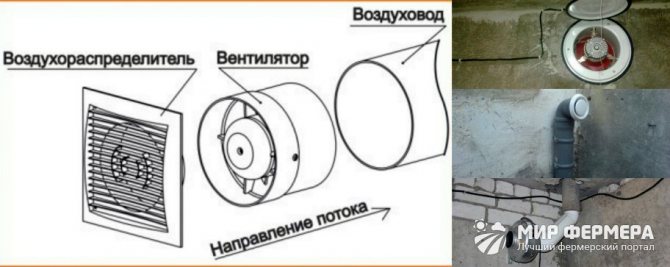

Figure 3. The main types of ventilation: natural and forced systems
As a rule, when building home cellars, the choice is made in favor of natural ventilation. However, for residents of regions with a cold climate, the combined type is more suitable, which will allow you to control the intensity of air exchange and prevent freezing of the underground storage in severe frost.
When is natural ventilation not enough?
An organized natural ventilation system may not be enough in the following cases:
- Large cellar area (more than 40 m2). In this case, during the frosty season, the chimney can be completely covered with frost formed due to frozen condensate. As a result, air movement is significantly reduced and becomes insufficient to organize the correct microclimate. If a basement with such an area is divided into separate rooms and pipes are installed in each, then mechanical ventilation will not be needed.
- Natural air exchange will not be enough if it is planned to equip a workshop or a mini-gym in the garage cellar. Only fans can supply enough oxygen.
- Air movement with blowers will be required if you plan to store a large amount of supplies. If vegetables are stored in the cellar, then the exhaust device will still fight against unpleasant odors.
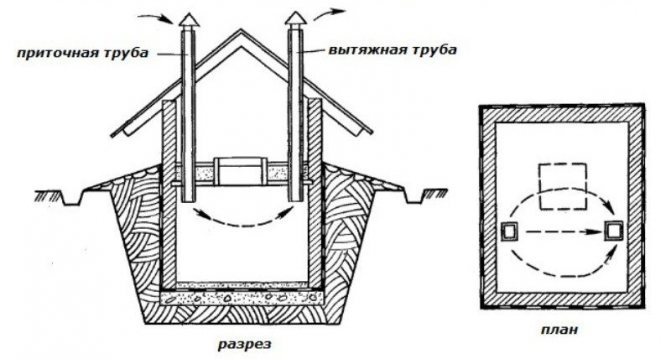

Example wrong ventilation devices (pipes are on the same level and not equipped with valves)
Ventilation system control
The quality of ventilation in the cellar in the garage, as well as its performance, is recommended to be periodically checked. To do this, go down to the cellar and light a match. If the flame goes out quickly, then there is a large amount of carbon dioxide in the room, therefore, the air exchange is rather weak.
The ventilation system in the cellar in the garage requires periodic inspection and cleaning of accumulated dirt and debris. It is periodically overgrown with cobwebs, layers of dust. The mechanical part of the structure also needs to be checked. For more efficient operation and control of the amount of incoming air, one supply channel is divided into two parts using a special partition. Thus, it is possible to normalize the volume of incoming air.
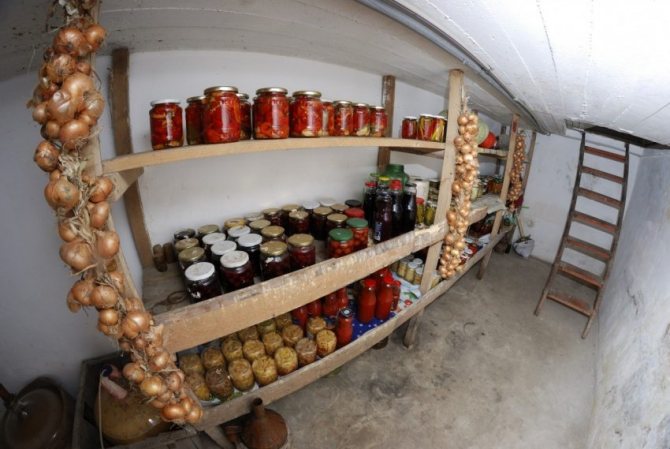

Cellar under the garage
Installation of the ventilation system: the main stages
When installing the ventilation system, a large number of tools are not required. You will need:
- the pipes themselves;
- fastening clamps;
- screws and dowels;
- grilles for protection;
- deflectors or visors;
- drill and hammer.
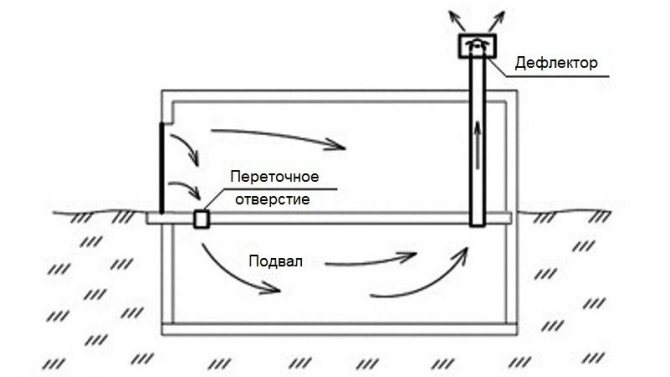

Air is removed through the exhaust duct, the inlet opening of which is located opposite the gate
Holes are punched in the walls for fastening pipes, fasteners are installed. The duct sections are assembled on the floor, after which the finished structure is fixed in the prepared fixings. All joints must be sealed with special tape or sealant.
The process of arranging ventilation in the cellar in the garage, as you can see, is simple. The best option is considered to be a system created at the construction stage.But if there is none, then it will not be difficult to assemble the entire structure yourself.


